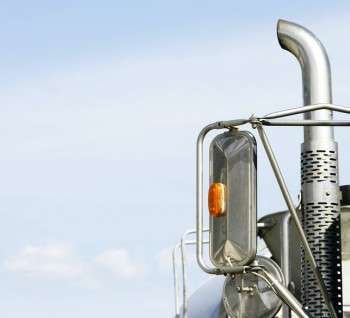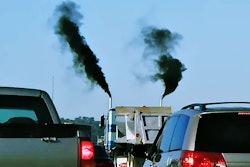
A final rule to establish new emissions and fuel economy standards for medium- and heavy-duty vehicles, yielding huge fuel economy benefits, is expected to be published in the Federal Register Oct. 25 and take effect at the end of December.
The U.S. Environmental Protection Agency and the DOT’s National Highway Traffic Safety Administration developed the Phase 2 greenhouse gas emissions and fuel efficiency standards to immediately follow the Phase 1 standards, which will be fully implemented in 2017.
Phase 2 standards will build on the Phase 1, according to the 2,762-page joint rulemaking. They are projected to boost fuel savings as much as 25 percent over the next decade, depending on the vehicle. The agencies admit the costs of Phase 2 are higher than that of Phase 1, but say the benefits of the standards “greatly exceed costs” and provide short payback periods that will result in “substantial net savings over the vehicle lifetime.”
The agencies estimate payback time on tractors and trailers to be just two years. The payback period is estimated to be four years for vocational vehicles and approximately three years for heavy-duty pickups and vans.
The rule calls for specific percentage reductions in carbon dioxide emissions for tractors, engines and trailers.
Tractor standards for model year 2027 require at least 25 percent lower carbon dioxide emissions and fuel consumption than a 2017 model year Phase 1 tractor. This can be achieved, the agencies say, through improvements in the engine, transmission, driveline, aerodynamic design, tire rolling resistance, idle performance or other aspects of the tractor.
By 2027, the rule requires engines to achieve reductions in carbon dioxide emissions and fuel consumption that are 5.1 percent better than the 2017 baseline. The rule also requires engines to reduce emissions by 1.8 percent by 2021 and 4.2 percent by 2024.
The rule also requires 2021 model year combination tractors and engines to achieve up to 14 percent lower carbon dioxide emissions and fuel consumption from a model year 2017 truck, and 20 percent in model year 2024 before meeting the 25 percent reduction by 2027.
The Phase 2 rulemaking introduces for the first time standards on trailers, which begins with model year 2018 trailers. The rule states these standards can be achieved through tire and aerodynamic technologies that are already on the market.
EPA also proposed a number of changes and clarifications for rules respecting glider kits and glider vehicles. A glider kit is considered a vehicle when “it includes a passenger compartment attached to a frame with one or more axles.”
The rule contains standards for glider vehicles, but no separate standards for glider kits. Under the final rule, gliders will generally be considered new trucks, and the engines installed in them must be compliant with the model year in which the truck is assembled.











